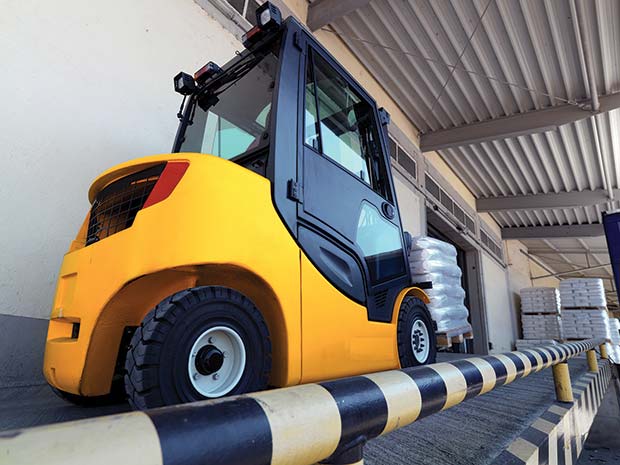Loading bays are the riskiest setting for workplace transport operations. FLTA chief executive Peter Harvey examines the risks and offers advice on how those responsible for safety can reduce risk.
 As an area that brings together the HSE’s three most dangerous forms of workplace transport (fork lift trucks, LGVs and HGVs) with workers on foot, it’s not surprising that loading bays are where one in four workplace transport accidents occur.
As an area that brings together the HSE’s three most dangerous forms of workplace transport (fork lift trucks, LGVs and HGVs) with workers on foot, it’s not surprising that loading bays are where one in four workplace transport accidents occur.
Accidents involving fork lift trucks often have life-changing results, with workers crushed, trapped or falling from vehicles.
Most regrettably, many of these events could have been avoided through the implementation of simple procedural and/or structural changes to sites.
Assess the risks yourself
As an employer, it is your duty – by law – to control workplace risks. Risk assessments enable you to identify the risks, as well as the sensible and proportionate measures to negate them.
Monitoring your loading bay activities, including those involving visiting vehicles, over a sustained period, allows you to develop a better understanding of how vehicles and pedestrian traffic are interacting in your loading bay area.
While observation can be done in person, we have heard from some companies who have found that recording video footage has proved effective in observing current practice and identifying potential issues.
Who is most at risk?
Workers on foot are most at risk in fork lift truck accidents: accounting for 57% of all serious injuries. Regardless of whether you’re a manager, supervisor, fork lift truck driver, warehouse operative or an office worker on a site where lift trucks operate, this statistic is directly relevant to you and your job.
It is one you should keep in mind when going about your daily tasks, whether you’re exploring ways to improve safety, operating lift trucks or simply walking close to areas where trucks are operating.
Segregation is key
The number one way of improving site safety and removing risk is to segregate or physically separate onfoot or pedestrian traffic from the routes taken by lift trucks.
This can be done in a number of effective ways, including:
• Painting segregated traffic routes on the loading area floor
• Using raised kerbs to separate the two traffic routes
• Installing elevated walkways
• Using crash-proof barriers
• Installing blue light warning systems on trucks or doorways
• Introducing proximity alarms on fork lift and pallet trucks
• Implementing one-way systems to reduce the need for vehicles to reverse
• Establishing waiting areas or holding pens for lorry drivers during loading/unloading
Alongside this, managers could consider changes to practice such as:
• Safety awareness training courses for operators and other site staff
• Excluding pedestrians from loading areas where practicable
• Enforcing speed limits for trucks working near pedestrians
• Prohibiting the use of mobile phone
• Using banksmen direct and supervise vehicle movement
Regardless of what changes you make, it cannot be emphasised strongly enough that managers should restrict workers on foot from lift truck traffic routes and enforce these rules strictly and consistently.
Doing this reinforces the message and instils a culture of safety on foot. Every loading bay is different and likely to present unique hazards and risks. However, a well-designed and maintained loading bay with suitable segregation of vehicles and people – that is policed by management – will make a significant difference to the safety of your operations.
Help is at hand
If you require assistance on practical measures to improve safety on your site, you should consider the FLTA’s Safe User Group, a special form of membership for fork lift truck end users that includes continual operational support, a help and advice hotline and a treasure trove of vital and essential safety resources.
The Fork Lift Truck Association is the UK’s independent authority on materials handling vehicles.
FORK LIFT TRUCK ASSOCIATION
Tel: 01635 277577




Comments are closed.